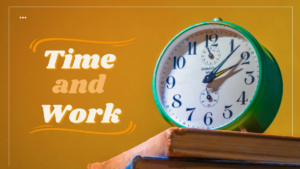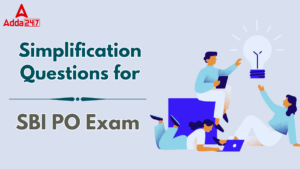(a) 6
(b) 12
(c) 15
(d) 18
(e) can’t be determined
Q2. Eleven years earlier the average age of a family of 4 members was 28 years. Now the average age of the same family with six members is yet the same, even when 2 children were born in this period. If children belong to the same parents and the age of the first child at the time of the birth of the younger child was same as there were total family members just after the birth of the youngest members of this family, then the present age of the youngest member of the family is
(a) 3 years
(b) 5 years
(c) 6 years
(d) 2 years
(e) 4 years
Q3. An oil refinery takes 100 ℓ of crude oil as input and after refining for 1 h gives certain amount of output oil Xℓ. This can be sold in the marked at a profit of Rs. 30 per ℓ. If this oil is further refined for 1/2 h, it gives oil Y ℓ. This can be sold at a profit of Rs. 50 per L. Output and input ratio at both the stages is 90%. The maximum amount that can be earned from 1000 L of crude input out of both the cases is
(a) Rs. 40000
(b) Rs. 30000
(c) Rs. 27000
(d) Rs. 40500
(e) Rs. 35500
Q4. Rohit bought 20 soaps and 12 toothpastes. He marked-up the soaps by 15% on the cost price of each, and the toothpastes by Rs. 20 on the cost price each. He sold 75% of the soaps and 8 toothpastes on marked price and made a profit of Rs. 385. If the cost of a toothpaste is 60% the cost of a soap and he got no return on unsold items, what was his overall profit or loss?
(a) Loss of Rs. 355
(b) Loss of Rs. 210
(c) Loss of Rs. 250
(d) Profit of Rs. 350
(e) profit of Rs. 325
Q5. Sandeep after travelling 50 km meets a swami who suggests him to go slower. He then proceeds at ¾ of his former speed and arrives at his destination 35 minutes late. Had the meeting occurred 24 km further Sandeep would have reached its destination 25 minutes late. Find the initial speed of Sandeep.
(a) 48 km/hr
(b) 36 km/hr
(c) 54 km/hr
(d) 58 km/hr
(e) 60 km/hr
Directions (6-10): Study the following pie-chart and bar diagram and answer the following questions.
The given pie chart shows the percentage-wise distribution of total students in six schools. Bar graph shows no. of boy students in each school.
Q6. What is the sum of the number of girls in School C, the number of girls in School E and the number of boys in School D together?
(a) 1,700
(b) 1,900
(c) 1,600
(d) 1,800
(e) 2,300
Q7. What is the ratio of the number of boys in School C and number of girls in School B together to total number of students in School E?
(a) 45 : 97
(b) 43 : 95
(c) 52 : 87
(d) 65 : 87
(e) 73 : 43
Q8. What is the difference between the total number of students in School F and the number of boys in School E?
(a) 820
(b) 860
(c) 880
(d) 840
(e) 260
Q9. In which of the following schools is the total number of students equal to the number of girls in School E?
(a) A
(b) B
(c) C
(d) D
(e) F
Q10. The number of girls in School A is approximately what percentage of the total number of students in School B?
(a) 55
(b) 50
(c) 35
(d) 45
(e) 40
Directions (11 – 15): Find the wrong number in the given number series:
Q11. 1524, 1541, 1576, 1626, 1694
(a) 1524
(b) 1541
(c) 1576
(d) 1626
(e) 1694
Q12. 169, 184 , 139, 216, 109
(a) 169
(b) 184
(c) 139
(d) 216
(e) 109
Q13. 32, 18, 10.8, 6.48, 3.888
(a) 32
(b) 18
(c) 10.8
(d) 6.48
(e) 3.888
Q14. 54, 58, 117, 354, 1419, 7098
(a) 54
(b) 58
(c) 117
(d) 1419
(e) 7098
Q15. 0, 4, 18, 54, 100, 180
(a) 0
(b) 18
(c) 54
(d) 4
(e) 100
You may also like to Read:






 Quadratic Equation Questions for SBI PO ...
Quadratic Equation Questions for SBI PO ...
 Time and Work Formula, Concept & Apt...
Time and Work Formula, Concept & Apt...
 Simplification Questions for SBI PO Exam
Simplification Questions for SBI PO Exam




